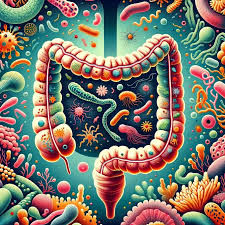Importance of the Seven Chakras
- Dinesh Mishra
- Aug 18, 2021
- 4 min read
Updated: Sep 21, 2021

There’s no tell-tale sign to reflect a blockage of our Chakras. That’s why technology comes to our rescue. Timewaver has developed a smart Artificial Intelligence-based tool, named Healy which harmonizes imbalances in the seven chakras of your body - Crown, Third-eye, Throat, Heart, Solar plexus, Sacral, and Root.
To live more consciously, adopt a safe, secure, and energetic way.
Balance your Chakras with Healy.
Muladhara Chakra – Root Chakra
Color – Red; Element – Earth
The Muladhara Chakra is located at the base of the spine, between the anus and the genitals. It is characterized by the emotions of survival, stability, ambition, and self-sufficiency. When this chakra is out of balance, a person starts feeling unstable, ungrounded, lack of ambition, lack of purpose, fearful, insecure and frustrated. However, when the root chakra is balanced, these are replaced by more positive emotions, and you feel stable, confident, balanced, energetic, independent, and strong.
Svadhishthana Chakra – Sacral Chakra
Color – Orange; Element – Water
The Svadhishthana Chakra is located in the lower abdomen, about four fingers below the navel. Its attributes include the basic need for sexuality, as well as creativity and self-worth. When the sacral chakra is imbalanced, a person may feel emotionally explosive and irritable, sense a lack of energy and creativity, feel manipulative, or obsessed with sexual thoughts. When balanced, it makes one feel more vibrant, happy, positive, satisfied, compassionate, and intuitive.
Manipura Chakra – Solar Plexus Chakra
Color – Yellow; Element – Fire
The Manipura Chakra is located at the solar plexus, between the navel and the bottom of the rib cage. It is characterized by emotions like ego, anger, and aggression. An imbalance of the solar plexus chakra can manifest physically as digestive problems, liver problems, or diabetes. On an emotional level, one might struggle with depression, lack of self-esteem, anger, and perfectionism. By balancing this chakra, we feel more energetic, confident, productive, and focussed.
Anahata Chakra – Heart Chakra
Color – Green; Element – Air
As the name implies, the Anahata Chakra is located in the heart region. This chakra is the seat of balance, and it is characterized by emotions of love, attachment, compassion, trust, and passion. When the heart chakra is imbalanced, a person may deal with emotional issues like anger, lack of trust, anxiety, jealousy, fear, and moodiness. By harmonizing this energy center, a person begins to feel more compassionate, caring, optimistic, friendly, and motivated.
Vishuddha Chakra – Throat Chakra
Color – Blue; Element – Space
The Visuddha Chakra is located at the base of the throat, coinciding with the thyroid gland. It is associated with inspiration, healthy expression, faith, and the ability to communicate well. A blockage in the throat chakra may be experienced as timidity, quietness, a feeling of weakness, or the inability to express our thoughts. When this chakra is balanced, it enables creativity, positive self-expression, constructive communication, and a sense of satisfaction.
Ajna Chakra – Third Eye Chakra
Color – Indigo; Element – None
The Ajna Chakra (pronounced as ‘Agya Chakra’) is located between the eyebrows. Also known as the Third Eye Chakra, it is often used as a focal point during asana practice to develop more concentration and awareness. It is said that meditating upon this chakra destroys the karma of past lives and brings liberation and intuitive knowledge.
Its attributes are intelligence, intuition, insight, and self-knowledge. When imbalanced, it may make you feel non-assertive and afraid of success, or on the contrary, it can make you more egoistical. An imbalance can manifest as physical problems like headaches, blurry vision, and eye strain. When this chakra is active and balanced, a person feels more vibrant and confident, both spiritually and emotionally. In the absence of the fear of death, one becomes his own master and remains free of all attachment to material things.
Sahastrara Chakra – Crown Chakra
Color – Violet/White; Element – None
The Sahastrara Chakra is located at the crown of the head. The seventh chakra is the center of spirituality, enlightenment, and dynamic thought and energy. It allows for the inward flow of wisdom and brings the gift of cosmic consciousness. When it gets imbalanced, one might suffer from a constant sense of frustration, melancholy and destructive feelings.
Chakras and Health
Chakras are associated with the organs and glands of the particular region where they are located. As such, they have a strong bearing on our health, our mind state, and our relation with others. Based on various factors such as our lifestyle, environment and surroundings, past experiences, etc, the chakras can either be balanced or imbalanced. If a chakra is imbalanced, it goes into either a hypoactive or a hyperactive mode. A hypoactive or blocked chakra’s functioning is either insufficient or reduced. Likewise, a hyperactive chakra means there is too much energy flowing into that particular region, and as such, there is an imbalance in the overall flow of energy throughout the body. Since chakras are interrelated, when one of them is imbalanced, it causes a disturbance in the functionality of the other chakras as well. This makes people feel disconnected, anxious, fearful, and it also manifests as health problems in one or more areas of the body. To function at their best, your chakras need to be balanced. And for this, you need to know what the chakras actually do and what are some of the things you can do to take care of them.
Function and importance of the chakras
The chakras act as distribution centers. They distribute the five pranas to their associated local regions. For example, the root chakra will distribute the ‘apana prana’ to the pelvic region and provide energy for the organs in this region. When a chakra is blocked or not functioning properly, this distribution pattern gets disturbed, and physical or psycho-emotional/energy issues arise.





Comments